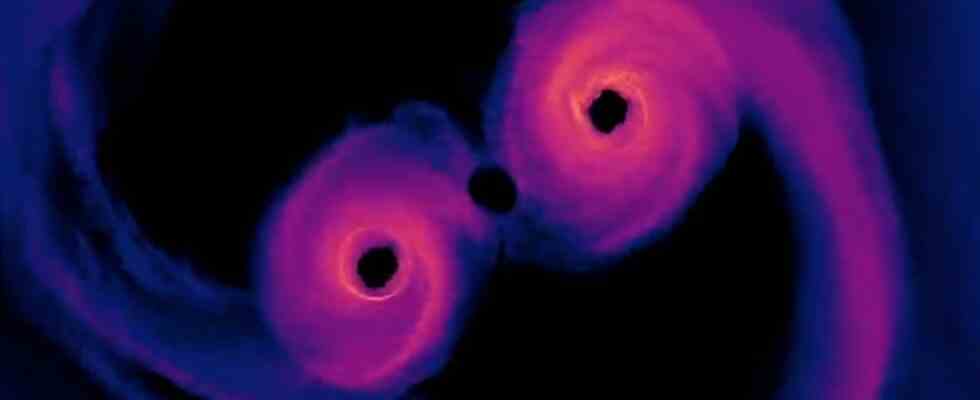A rare spectacle: Two supermassive black holes could potentially collide in the galaxy SDSS J1430+2303. According to researchers, the massive objects in the center of the galaxy could collide within the next three years.
A rare spectacle: Two supermassive black holes could potentially collide in the galaxy SDSS J1430+2303.
According to researchers, the massive objects in the center of the galaxy could collide within the next three years.
Similar events have already been observed in the past. So far, however, observations have been limited to black holes with a simple stellar mass.
The reason: The LIGO and Viro gravitational wave detectors are designed for these masses. For heavier objects, the resulting gravitational waves have a frequency that is too low for current detectors to measure.
The potentially colliding objects at the center of the galaxy together weigh about the same as 200 million suns, making them too massive to measure.
Although recurring vibrations and X-ray measurements indicate that the two very heavy celestial bodies are supermassive black holes, there is no 100 percent certainty.
While objects took a year to orbit 3 years ago, they now only need a month.
In the event of a collision, a wide variety of measurable radiation would probably be released. The researchers hope this will give them more insight into the formation of supermassive black holes.
In three years, supermassive black holes could collide

Watch the video: Extraterrestrial spectacle – in three years supermassive black holes could collide.
